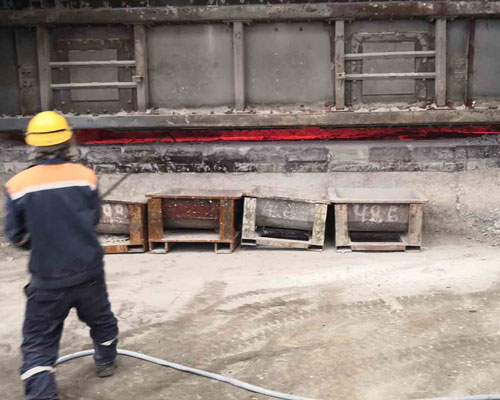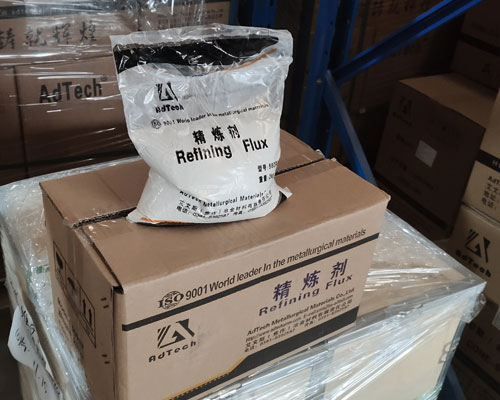Molten metals such as aluminum and aluminum alloys remove impurities during the refining process. In a known purification process, aluminum is melted in a furnace and then transferred to a casting machine for metal forming. Aluminum is usually transferred from the furnace to the casting machine through the casting launder. Molten aluminum flows into the groove at the inlet and flows out at the outlet in a continuous manner through the groove.
In many cases, the launder connection includes degassing components and filters designed to remove impurities in the molten aluminum. Some impurities include dissolved hydrogen, particles (such as oxides, carbides, borides, aluminum oxide, magnesium oxide) and various other elements (such as dissolved alkali metals (Na), lithium (Li) and calcium (Ca) )). These impurities may adversely affect the performance of the finished product during the casting process.
The molten metal refining process typically utilizes a flux injection mechanism that is configured to introduce flux into the molten aluminum. Generally, the flux includes chlorine or a mixture of chlorine and an inert gas such as argon. When combined, the flux helps to remove impurities from the molten aluminum. The flux is a granular refining agent or powder refining agent sold by AdTech. Chlorine gas and chloride salts can effectively convert alkali metals into salts, which can coalesce under the action of additives and rise to the surface of molten materials.

Specifically, hydrogen diffuses into the inert bubbles and is removed as the particles around the bubbles coalesce and rise to the top of the molten aluminum alloy. Flux and impurities can form slag or waste products, which are regularly skimmed or trapped in the ceramic foam filter downstream. Usually, chlorine or chlorine salt is removed with the scum. However, due to the environmental damage and disposal burden of chlorine gas, the use of chlorine gas should be reduced in such applications.
Methods of refining molten aluminum and alloys utilize various chambers that include at least one distributor with an elongated rotating shaft connected to an impeller. When the flux is discharged through the rotating shaft and distributed in the room by the impeller, the impeller is adapted to rotate in the molten aluminum. The impeller and the rotating shaft are particularly used to distribute the flux in the molten alloy in a sufficient manner so that the flux in the molten alloy is widely distributed, thereby chemically interacting with a high percentage of impurities therein, while using minimal chlorine gas or salt. The impurities then rise to the surface of the molten aluminum alloy and can be removed.

